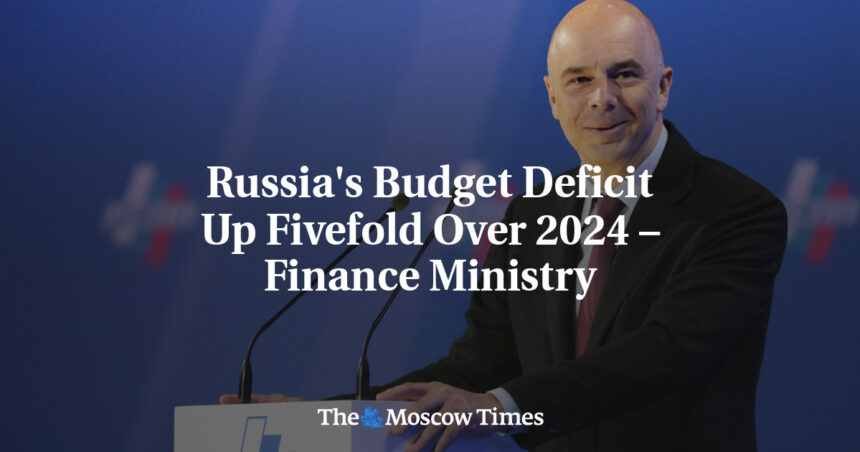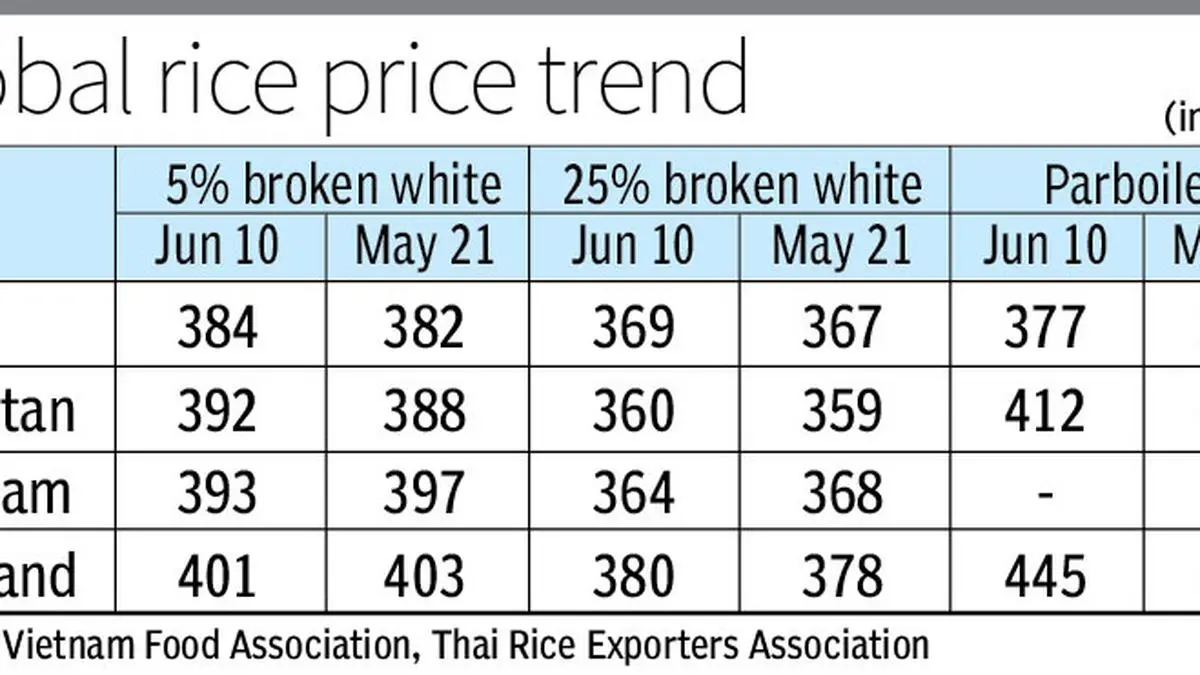Russia’s budget deficit increased by 168 billion rubles ($ 2.18 billion) in May, which caused the total of the first five months of 2025 to 3.4 billion rubles ($ 44.2 billion), or 1.5% of GDP, according to the Ministry of Finance.
That is almost five times higher than the same period of 2024 and almost equal to the total planned deficit for the whole year: 3.8 billion rubles ($ 49.4 billion), or 1.7% of GDP.
Initially, the Ministry of Finance was aimed at maintaining the deficit three times smaller: 1.2 billion rubles ($ 15.6 billion), or 0.5% or GDP.
May’s budget results were somewhat worse than expected, said economist Yegor Susin. Income growth has slowed down, and although the expense has decreased a little after the early payments of the beginning of the year, it has not fallen as much as expected.
Susin estimates that the current deficit trajectory is executed in approximately 1% of the highest than planned GDP, which translates into almost 6 billion rubles ($ 78 billion).
MMI analysts warn that the budgetary situation is becoming increasingly critical and expects the deficit to reach 6 to 7 billion rubles ($ 78-91 billion).
Before the large -scale invasion of Ukraine, government expenditure extended equally throughout the year, with an increase in December to close the contracts.
But since 2023, the Ministry of Finance has military expenses loaded with frontal at the beginning of the year, and the expense returns to normal half a year before another jump in November-December. Analysts expected the budget to move to the surplus as of May, but that did not happen.
The main factors are low oil prices and a strong ruble. The ruble was appreciated for a sixth consecutive month in May, while oil and gas revenues fell to only 513 billion rubles ($ 6,67 billion), its lowest point in two and a half years.
During the first five months of 2025, these revenues totaled 4.24 billion rubles ($ 55.1 billion), 14.4% less than the previous year (after four months, the deficit was 10.3%). The decrease of 2.6 billion ruble ($ 33.8 billion) in oil and gas revenues is the main reason for the budget review.
While these income still comes out of the reference level, the Ministry of Finance affirms about the risks due to the conditions of the weakening price.
Non -oil and gas revenues are providing some relief. Its entrance slightly exhite the revised objective, which increased by 0.8 billion rubles ($ 10.4 billion).
In May alone, they brought almost 2 billion rubles ($ 26 billion), and for five months, they totaled 10.5 billion ($ 136.5 billion) -12.3% more than in January to May 2024. This growth is wide due to the high sentence. Billing taxes, including VAT, also increased by 5.8% compared to last year.
The budget expenditure in May totaled 2.6 billion rubles ($ 33.8 billion) and 18.1 billion ($ 235.3 billion) in five months, 3.1 billion ($ 40.3 billion) more than the same period last year.
Part of this expense was fined by additional income of non -oil and gas received at the end of 2024, says the Ministry of Finance, expressing its confidence that the budget will comply with the updated plan.
TSIFRY TSIFRY analysts point out that spending has continued with a “high” trajectory, with the annual growth rate for January in May that remains in parking at 21%.
The Ministry of Finance plans a total expenditure of 42.3 billion rubles ($ 549.9 billion) for the year, which would require requiring cutting spending at 3.9% in the second half of the middle of June to December 2024, according to MMI analysts.
“That would mean a real cut or about 12%, which seems unlikely,” they say. They expect a total expense of at least 44-45 billion rubles ($ 572-585 billion), while the income will fall short at at least 0.5 billion rubles ($ 6.5 billion). This points to a deficit of 6 to 7 billion rubles ($ 78-91 billion), and that is an optimistic scenario, they conclude.
To fulfill the annual objective reviewed, the Ministry of Finance would need to manufacture a surplus of months or 270 billion rubles ($ 3.51 billion) from May to November, according to Gazprombank analysts. This is higher than the recent average of 210 billion rubles ($ 2.73 billion) per month for this period.
The experts of the Gaidar institute predict that the budget deficit would improve after reaching the peak in May-June. But they noticed that the economic deceleration, the commercial conditions of work, the high interest rates and the geopolitical challenges are pressing the budget and the existing displacement.
Even so, they believe that loans and the use of liquid assets of the National Welfare Fund cover the deficit.
The liquid portion of the fund had fallen to 2.8 billion rubles ($ 36.4 billion) at the end of May, with 447 billion ($ 5.81 billion assigned to cover the oil and gas revenue deficit.











